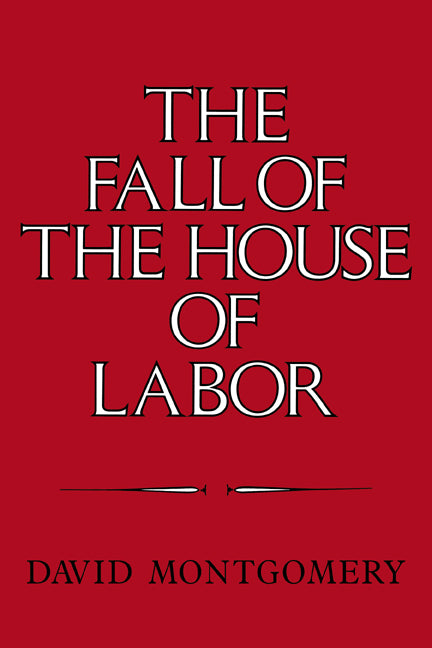Freshly Printed - allow 10 days lead
Couldn't load pickup availability
The Fall of the House of Labor
The Workplace, the State, and American Labor Activism, 1865–1925
The changing ways in which American industrial workers mobilised concerted action.
David Montgomery (Author)
9780521379823, Cambridge University Press
Paperback, published 27 January 1989
508 pages, 1 b/w illus. 3 tables
22.9 x 15.9 x 3 cm, 0.756 kg
"...the most sweeping portrait of working-class life to emerge from the new labor history...a subtle, complex, often brilliant study..." Alan Brinkley in the New Republic
This book studies the changing ways in which American industrial workers mobilised concerted action in their own interests between the abolition of slavery and the end of open immigration from Europe and Asia. Sustained class conflict between 1916 and 1922 reshaped governmental and business policies, but left labour largely unorganised and in retreat. The House of Labor, so arduously erected by working-class activists during the preceeding generation, did not collapse, but ossified, so that when labour activism was reinvigorated after 1933, the movement split in two. These developments are analysed here in ways which stress the links between migration, neighbourhood life, racial subjugation, business reform, the state, and the daily experience of work itself.
Acknowledgments
Abbreviations used in text and notes
Introduction
1. The manager's brain under the workman's cap
2. The common laborer
3. The operative
4. The art of cutting metals
5. White shirts and superior intelligence
6. 'Our time … belives in change'
7. Patriots or paupers
8. 'This great struggle for democracy'
9. 'A maximum of publicity with a minimum of interference'
Index.
Subject Areas: Modern history to 20th century: c 1700 to c 1900 [HBLL], History of the Americas [HBJK]


